Isospectral drums
Background
In 1966 Kac asked the question "Can one hear the shape of a drum?",
i.e. do the frequencies of a drum's vibration fully determine its
shape? For plane domains with fixed boundary (which are the closest
to the physical drums), this question was answered in the negative by
Gordon, Webb and Wolpert (GWW) in 1992. Their construction based on
the so-called Sunada method (1984) that uses representation theory.
Various proofs, generalizations and applications of this construction
exist; in particular one recent application is in the study of Dirac
points in the spectrum of graphene, by A.Comech and myself.
This page provides the instructions for proving the isospectrality
of Gordon--Webb--Wolpert domains. The proof was constructed by
Berard, adapted to folding by Chapman; blueprints were made by
myself. All references are given below.
Instructions
- Print out the 3 drawings of domain A,
number 1,
number 2 and
number 3. These will represent three
copies of the same eigenfunction of the domain.
- Turning the domain upside down corresponds to multiplying the
function (which describes displacement from flat equilibrium) by -1.
- We will be gluing the copies of the functions along edges marked
by a number followed by "g". Negative number means that this copy
will be turned over. Convince yourself that such a gluing results
in a continuous and continuously differentiable function.
- We will fold the copies along lines marked by a number followed
by "f". Folding corresponds to adding the values of the function
(or rather subtracting: note that one of them is multiplied by -1).
Convince yourself that the new function takes value zero along the
fold.
- Turn over the copy with the (very long) edge marked by -1g and
glue it to the copy with the edge marked by 1g.
- Fold the glued copies along the line 2f. When folding, make sure
the solid line is on the outside of the fold and dashed line is on
the inside.
- Find the line 3f and fold along it. Carry on sequentially.
- In the end you should get the triple cover of domain 3 with
correct boundary conditions.
Pictures of work in progress
- After step 1
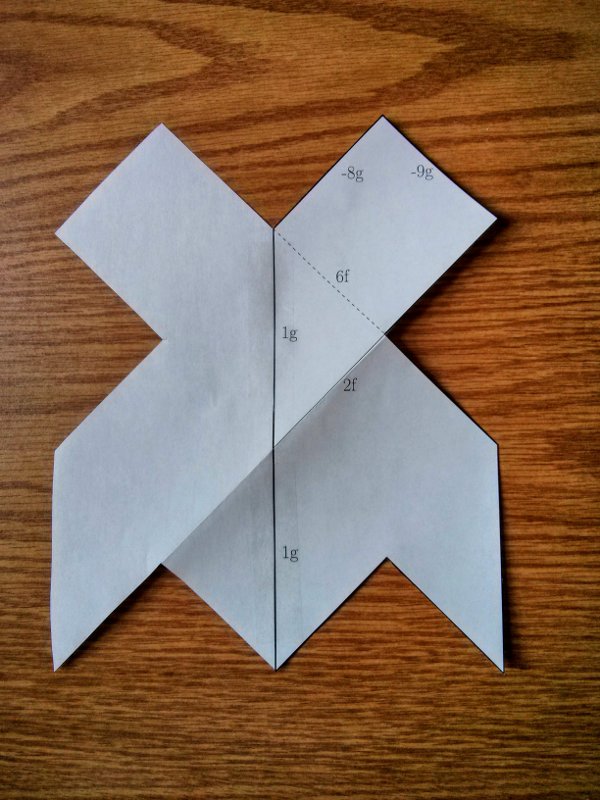
- After step 2
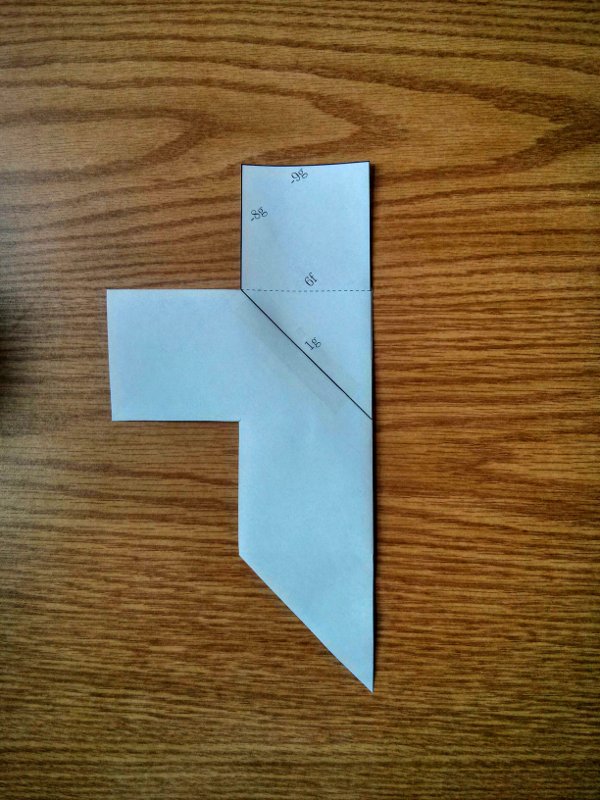
- After steps 3 and 4
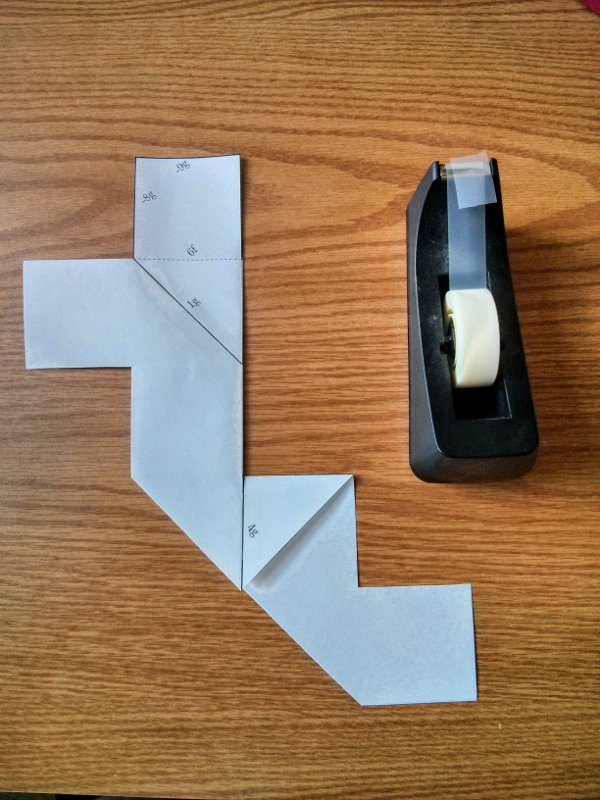
- After steps 5, 6 and 7
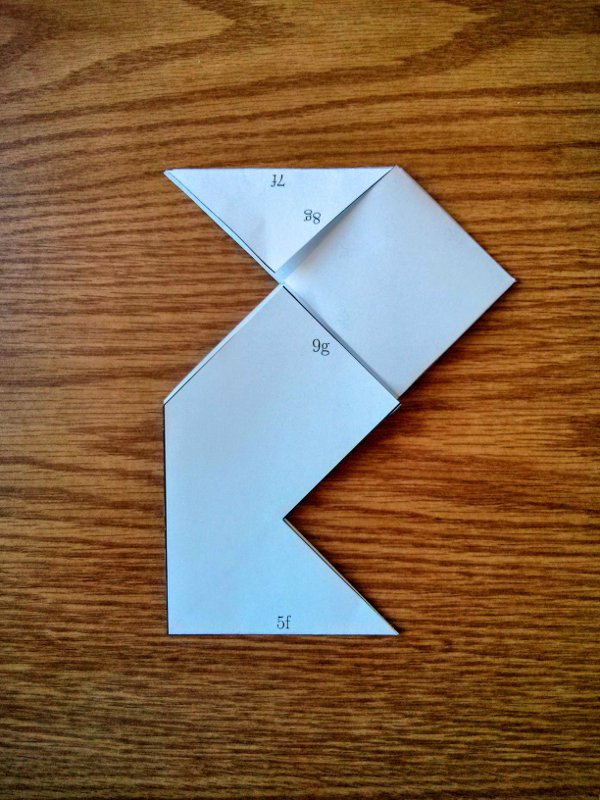
- The final view
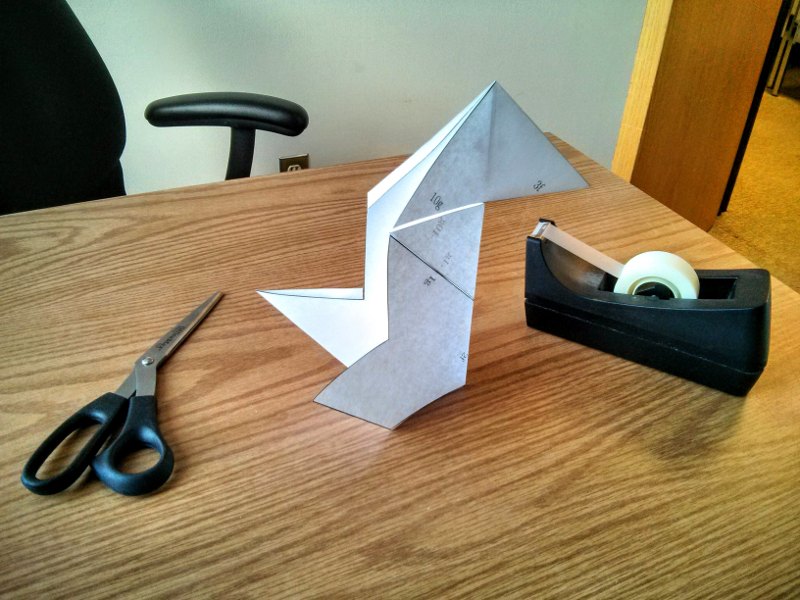
References
Popular and easy-to-read articles
More rigorous
This file was last modified on Tuesday, 15-Sep-2015 17:29:02 CDT.










